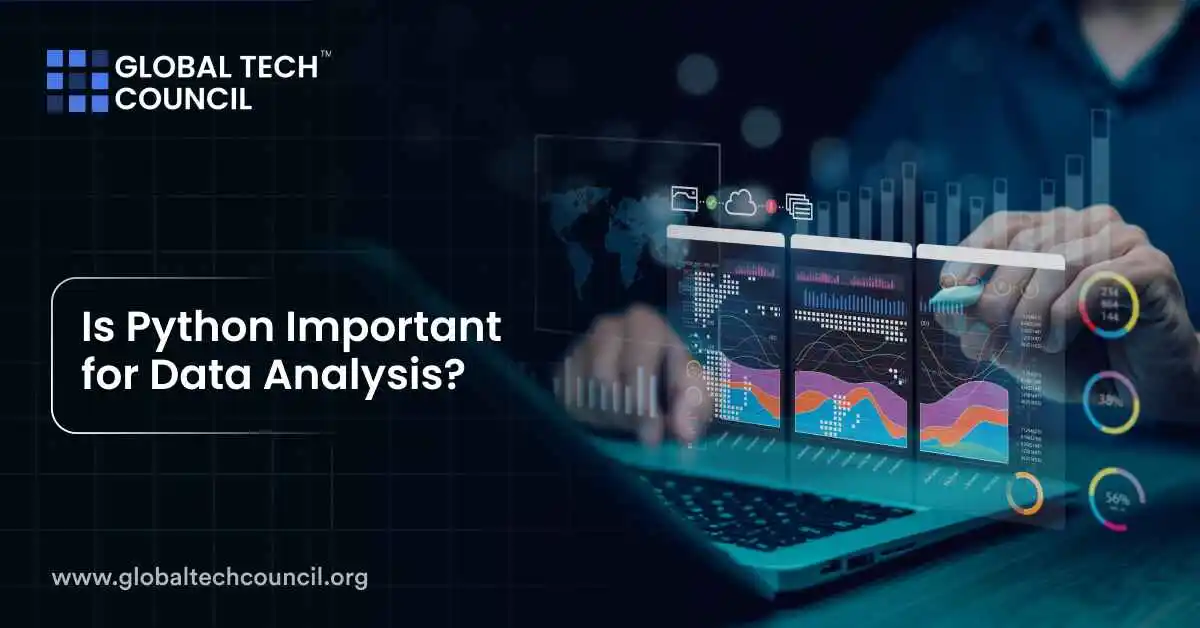
The producers of Python describe the Python language as “an interpreted, an object-oriented, high-level programming language with dynamic semantics. It’s high-level built-in data structures, combined with dynamic typing and dynamic binding, make it very attractive for Rapid Application Development as well as for use as a scripting or glue language to connect existing components.”
For those of you who are unaware, Python is a versatile general-purpose programming language that helps develop both web and desktop applications. It is one of the fastest-growing programming languages in the world. If you are one who is looking to become a data analyst and want to build a career in data analysis, it is important for you to take a closer look at this versatile programming language to have a better idea of why Python is the best fit for data analysis. So, that answers the question posed, ‘Is Python important for data analysis? The answer is a definite Yes.
So, let’s start with the basics.
What is Data Analysis?
Data analysis or data analytics is the process of applying statistical, logical, and analytical techniques to data sets for discovering information that will aid in making informed decisions. A data analyst uses tools such as data mining, textual data analysis, and Business Intelligence (BI). The information gathered through data analysis is highly dependent on the quality of the data. Data analysis is driven by business goals. Data analysis curates meaningful insights from past data and is generally not used for predictions.
Understanding the Python Programming Language
It is an object-oriented, high-level programming language with built-in data structures combined with dynamic typing and dynamic binding. Simply put, it is used to save data and process text, images, and numbers, and solve scientific equations. It is thus attractive for rapid application development as it helps in connecting the existing components together. Its syntax is easy to learn, and this emphasizes readability and reduces the cost of program maintenance. It will act as a stepping stone to learning other programming languages and frameworks.
Python provides a productive coding environment, unlike C# and Java, and it helps coders stay organized and productive. It is the best platform to rely on for general purpose tasks such as data mining, big data, and automation. It helps develop prototypes in an efficient manner.
So, Who is a Data Analyst?
A data analyst is one who is responsible for interpreting data and analyzing the results with the help of statistical techniques and ongoing reports. They are responsible for collecting data from primary or secondary data sources and maintaining databases. They develop and implement data collection systems, data analyses, and other strategies to optimize statistical efficiency and quality. They analyze, identify, and interpret trends or patterns in complex data sets. They identify improvements by monitoring performance and quality control plans. Data analysts locate and correct code problems by reviewing computer reports performance indicators, and printouts.
Why is Python Essential for Data Analysis?
- Easy to learn- Python boasts a gradual and low learning curve, thanks to its focus on simplicity and readability. It is an ideal tool for beginning programmers. In Python, programmers have the advantage of using fewer lines of code to accomplish tasks one will need when using older languages.
- Flexibility- Python is ideal for developers who want to try something creative. Python is ideal for developers who want to script websites and applications.
- Open-source- By saying that Python is open-source, we mean that it is free, and it uses a community-based model for development. It can run on both Windows and Linux environments. It can be ported to multiple platforms. Some of the open-source Python libraries are data manipulation, statistics, mathematics, machine learning, data visualization, and natural language processing.
- Well-supported- Usually, when anything goes wrong with something that we are using for free, getting help can be quite a challenge. But fortunately, Python has a large following and is heavily used in academic and industrial circles. This means that there are plenty of useful analytics libraries that are available. Python users who need help can always turn to mailing lists, Stack Overflow, and user-contributed code and documentation. As Python gains more popularity, more users will contribute information regarding their user experience, and this means that more support material will be available at no cost. This will create a self-perpetuating spiral of acceptance by an increasing number of data analysts and data scientists.
Conclusion
Python is a perfect fit for data analysis due to its simplicity and ease of performing repetitive tasks. Python is, no doubt, a valuable part of a data analyst’s toolbox. Python provides a wide array of Python libraries that data analysts can use to carry out their functions. Some of them are TensorFlow, NumPy, Keras, Eli5, SciPy, etc. The demand for Python and data analysts will increase by 1000% over the next few years. Now is the best time to make your move. Learn and master Python to become a sought-after data analyst and make it big in the data industry. Python certainly holds a bright future in the field of data analysis and data science as a whole. If you are interested in becoming a data expert, learn more about the data science certifications offered by Global Tech Council.
Leave a Reply